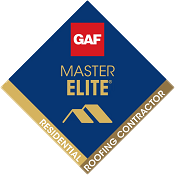When it comes to maintaining a home, the roof is often an overlooked component, yet it plays a vital role in safeguarding the entire structure. Residential roofing, with its various materials, styles, and maintenance requirements, demands a clear understanding to ensure longevity and efficiency.
The Importance of Your Roof
The importance of a roof goes beyond just providing a shelter for a house.
- Most obviously, your roof also acts as a barrier to protect the house from water damage, which can cause extensive problems such as mold growth, rotting, and structural damage.
- A roof also provides a layer of insulation that keeps the interior of a home warm in winter and cool in summer. A poorly insulated or damaged roof can result in significant energy loss, leading to higher energy bills and an uncomfortable living environment. On the other hand, a well-insulated roof can significantly reduce energy consumption, helping homeowners save money and reduce their carbon footprint.
- Apart from its functional value, a roof also adds aesthetic value to a home, enhancing its overall appearance and curb appeal. A well-designed and properly installed roof can increase the resale value of a home.
Roofing Types
While a roof can be virtually anything a home designer can dream up, in general, there are a few common roof types.
Gable Roofs

Characterized by their distinctive triangular shape, these roof trusses are not only aesthetically pleasing but also offer practical benefits. Their unique design makes them easy to construct while maximizing the available attic space for additional storage or living areas. However, it’s important to note that in areas prone to high winds, alternative roofing options may be more suitable to ensure structural integrity and safety.
Hip Roofs
Similar to a gable roof, a hip roof also has two slopes but with all four sides of equal length, creating a pyramid-like shape. This type of roof offers better stability and wind resistance compared to gable roofs, making them ideal for areas prone to hurricanes or strong winds. However, the complexity of their design makes them more expensive to construct.
Flat Roofs
As the name suggests, flat roofs have little to no slope and are commonly found in modern homes. They offer a sleek, minimalist look but require regular maintenance to prevent water from pooling on the surface. Flat roofs also have limited insulation options, making them less energy-efficient compared to other roofing types.
Mansard Roofs
Also known as French roofs, mansard roofs have two slopes on each side with the lower slope being steeper than the upper one. This design provides additional living space in the form of an attic or loft and adds a touch of elegance to a home’s exterior. However, they are more complex to build and may require specialized contractors.
Shed Roofs

Shed roofs are single-sloped and often used for home extensions, sheds, or garages. They offer a simple, cost-effective option for smaller structures but may not be suitable for larger homes due to their limited drainage capabilities.
Roofing Materials
The material used in constructing a roof plays a significant role in determining its performance, longevity, and overall aesthetic appeal. In residential construction, there are several common roofing materials available, each with its unique advantages and disadvantages.
Asphalt Shingles

These are the most commonly used roofing material, as they are cost-effective, durable and require minimal maintenance. They come in a wide range of colors and styles to suit different home designs and are easy to install, making them a popular choice among homeowners. Asphalt shingles are made of fiberglass or organic materials that are saturated with asphalt and coated with mineral granules to enhance their strength and durability. They are fire-resistant and can withstand moderate to severe weather conditions, making them a reliable option for areas prone to hurricanes and windstorms.
Metal Roofing
Metal roofing has become increasingly popular in recent years due to its durability, sustainability, and energy efficiency. It is available in different materials, including aluminum, steel, and copper, each with its unique benefits. Metal roofs are resistant to fire, rot, and insects and can last up to 50 years or more with proper maintenance. They are highly reflective, which helps to reduce energy costs by keeping homes cooler in the summer and warmer in the winter.
Wood Shingles

Wood shingles offer a natural and rustic aesthetic to homes and are popular in areas with a traditional or historical architectural style. They are made from natural materials such as cedar, redwood, and pine and can last up to 30 years with proper maintenance. However, they require regular cleaning, staining, and treatment to prevent rotting and damage from insects. They are not fire-resistant, making them less suitable for areas prone to wildfires.
Clay and Concrete Tiles
Clay and concrete tiles are a popular roofing material that offers a long lifespan and excellent durability. They are highly energy-efficient, making them a more sustainable option for homeowners. They are available in different colors, shapes, and sizes, allowing for a unique and customized look for each home. Clay and concrete tiles can last up to 50 years or more with proper maintenance and are resistant to fire, rot, and insects.
Slate Tiles
Made from natural stone, slate tiles offer a luxurious and long-lasting option for roofs. They are highly durable and fire-resistant, making them a popular choice for areas prone to wildfires. Slate tiles come in various colors, sizes, and textures, allowing for a unique and customized look for each home. However, they are more expensive compared to other materials and require professional installation. With proper maintenance, slate tiles can last up to 100 years or more.
Other Roofing Components

A roof is far more than what is visible from the outside. It’s a complex system of various components that work together to provide structural support, insulation, and protection from the elements. Some essential roof components include:
Roof Deck
The roof deck is the foundation of a roof that provides structural support and acts as a base layer for other roofing materials such as shingles or tiles. It is typically made of wood, metal, or concrete and must be strong enough to withstand the weight of all the other roofing materials that will be installed on top.
Underlayment
The underlayment is a waterproof layer that is installed on top of the roof deck. Its primary purpose is to protect the roof deck from moisture and prevent leaks. It is typically made of a rubberized asphalt material or a synthetic polymer that is durable and flexible.
Flashing
Flashing is made of metal and is installed around chimneys, vents, and other protrusions to prevent water from seeping into the roof. It is an essential component of a roofing system as it helps to prevent leaks and water damage. There are many different types of flashing available, including step flashing, continuous flashing, and apron flashing, among others.
Gutters
Gutters are an important part of a roofing system as they collect rainwater and direct it away from the house to prevent water damage. They are typically made of aluminum, copper, or vinyl and are available in a variety of styles and sizes. Proper installation and maintenance of gutters are important to ensure they function correctly and protect the home from water damage.
Stronghold Roofing & Solar
Understanding residential roofing is essential for homeowners. It allows for informed decisions regarding material choices, maintenance, and repairs. A well-maintained roof not only enhances the appearance of your home but also contributes to its safety and efficiency. By paying attention to your roof, you ensure the longevity and integrity of your entire home.
When you need roofing services in Lakeland, Sarasota, or southern Georgia, contact the best roofing company in Florida – Stronghold Roofing & Solar.
FAQ’s – Understanding Residential Roofing
A residential roof consists of the roof deck, underlayment, flashing, gutters, and various roofing materials such as shingles or tiles.
Asphalt shingles are the most commonly used roofing material for residential homes due to their cost-effectiveness, durability, and easy installation.
It is recommended to have your roof inspected at least once a year, or after severe weather events. Regular inspections can help identify and address potential issues before they become major problems. Additionally, warranties for roofing materials may require regular inspections to remain valid.
The lifespan of a roof depends on various factors such as material type, climate, maintenance, and installation quality. Asphalt shingles typically last around 20-30 years, while metal and tile roofs can last up to 50 years or more with proper maintenance. Slate tiles have the longest lifespan of up to 100 years or more.
Professional installation is recommended for most roofing materials, as it ensures proper installation and helps maintain warranty coverage. For safety reasons, it is also best to leave roofing installation to trained professionals.










